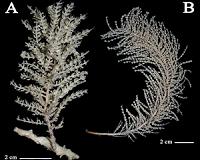| . |  |
. |
Vancouver, Canada (SPX) Jun 03, 2010 Inconspicuous "little brown balls" in the ocean have helped settle a long-standing debate about the origin of malaria and the algae responsible for toxic red tides, according to a new study by University of British Columbia researchers. In an article published in the Proceedings of the National Academy of Sciences Early Edition, UBC Botany Prof. Patrick Keeling describes the genome of Chromera and its role in definitively linking the evolutionary histories of malaria and dinoflalgellate algae. "Under the microscope, Chromera looks like boring little brown balls," says Keeling. "In fact, the ocean is full of little brown and green balls and they're often overlooked in favour of more glamorous organisms, but this one has proved to be more interesting than its flashier cousins." First described in the journal Nature in 2008, Chromera is found as a symbiont inside corals. Although it has a compartment - called a plastid - that carries out photosynthesis like other algae and plants, Chromera is closely related to apicomplexan parasites - including malaria. This discovery raised the possibility that Chromera may be a "missing link" between the two. Now Keeling, along with PhD candidate Jan Janouskovec, postdoctoral fellow Ales Horak and collaborators from the Czech Republic, has sequenced the plastid genome of Chromera and found features that were passed down to both apicomplexan and dinoflagellate plastids, linking the two lineages. "These tiny organisms have a huge impact on humanity in very different ways," says Keeling. "The tool used by dinoflagellates and Chromera to do good - symbiosis with corals - at some point became an infection mechanism for apicomplexans like malaria to infect healthy cells. "Resolving their evolutionary origins not only settles a long-standing scientific debate but could ultimately provide crucial information for tackling diseases and environmental concerns."
Share This Article With Planet Earth
Related Links University of British Columbia Darwin Today At TerraDaily.com
 New Species Of Invertebrates Discovered In The Antarctic
New Species Of Invertebrates Discovered In The AntarcticMadrid, Spain (SPX) Jun 07, 2010 The polyps of the new gorgonia discovered, Tauroprimnoa austasensis and Digitogorgia kuekenthali, in the region of Austasen, in the Eastern Weddell Sea, and to the south-east of the Falklands and Isla Nueve (in Chilean Patagonia) respectively, are small and elongated. Both species stand out for the number, shape and layout of the scales of calcium carbonate that cover the polyps, and for t ... read more |
|
| The content herein, unless otherwise known to be public domain, are Copyright 1995-2010 - SpaceDaily. AFP and UPI Wire Stories are copyright Agence France-Presse and United Press International. ESA Portal Reports are copyright European Space Agency. All NASA sourced material is public domain. Additional copyrights may apply in whole or part to other bona fide parties. Advertising does not imply endorsement,agreement or approval of any opinions, statements or information provided by SpaceDaily on any Web page published or hosted by SpaceDaily. Privacy Statement |